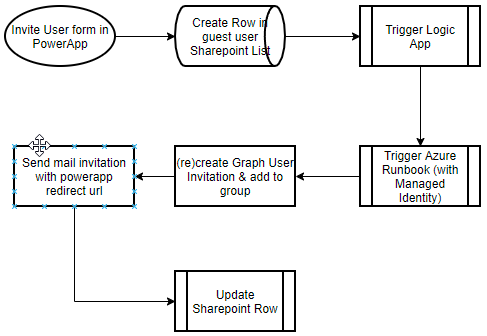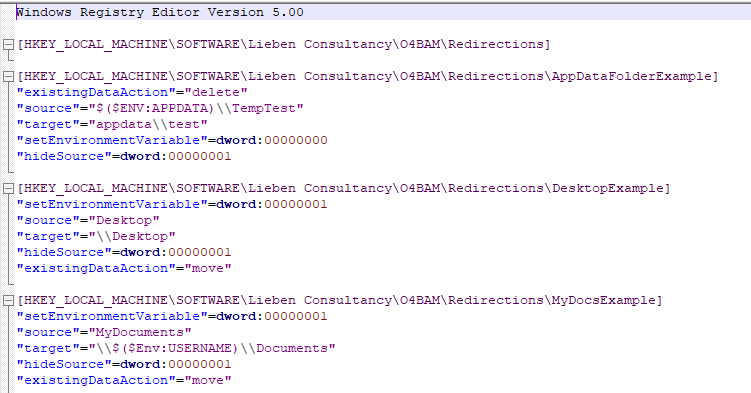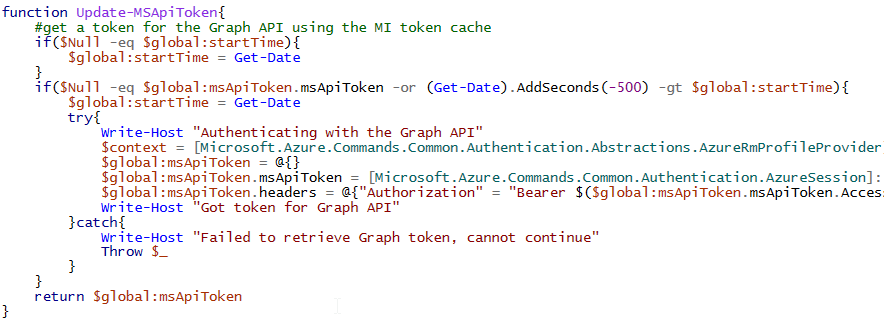Another week, another use case for Managed Identities in Automation Accounts!
The scenario today concerns a PowerApp and connected resources that should be shared with external identities, automatically of course. For each user this requires a guest account in the host / resource tenant, and a license. The license can be applied in the home tenant of the guest, or in your tenant.

Key points:
- Runbook that invites a user and adds the resulting guest account to a security group
- Security group gives access to the PowerApp and underlying (SpO) resources, and uses Group Based Licensing to license the guest for PowerApps and Sharepoint Online
- Logic App that is triggered by the PowerApp (trigger on create item in a sharepoint list), and starts the runbook
- When the invited user (guest) redeems the invitation, they are directed to a Sharepoint page first so Sharepoint syncs their profile. Otherwise, the PowerApp will not have access to any lists in Sharepoint Online as Guests are not synced to SpO until they access SpO directly.
I may demo the PowerApp, Logic App and Sharepoint lists at some point, but the main thing I wanted to share today is the Azure Runbook that creates the Guest invitation and adds the Guest to a security group using the Managed Identity of the Automation account, instead of service accounts or other pre-2021 solutions:
https://gitlab.com/Lieben/assortedFunctions/-/blob/master/invite-guestUser.ps1

